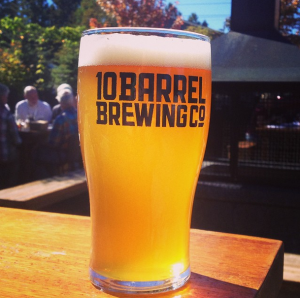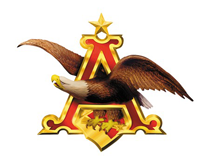
In many markets, the 10 Barrel brand is already sold through A-B InBev wholesalers. But in areas like Boise, Idaho (Hayden Beverage Co.), Pendleton, Ore. (Graybeal Distributing), and Vermont (Calmont Beverage), 10 Barrel is sold by MillerCoors-affiliated distributors, creating a potentially problematic alignment issue for A-B’s newest craft brand.
It’s an issue that will affect not just A-B InBev and 10 Barrel, but other ongoing and future acquisitions as well. No doubt one of the biggest advantages that A-B InBev has over its competitors is its nationwide network of more than 500 wholesalers. For a small craft brewer like 10 Barrel, access to the network would be monumental as it continues to grow. But even the world’s largest brewer can’t just plug the brand in anywhere it sees fit without first hurdling a few obstacles.
It’s a hot enough issue that soon after the 10 Barrel purchase was announced, Paul Gatza, director of the Brewers Association, took to the organization’s blog to point out the difficulty associated with transferring a given brand’s distribution rights from a MillerCoors house to an A-B house.
While often times difficult, such transfers aren’t uncommon.
In June, 2007, Portland, Ore.-based Widmer Brothers Brewing acquired a 42 percent stake of Chicago’s Goose Island. At the time, A-B owned 25 percent of Widmer in exchange for access to its distribution network. Subsequently, the Widmer investment in Goose Island enabled the Chicago brewer to get on any Bud truck throughout the U.S.
Goose Island didn’t immediately look to expand, but did realign its footprint in some parts of the country. In Minnesota for instance, Wirtz Beverage, a MillerCoors house, had been selling Goose products at the time of the Widmer investment. Wirtz struck a deal with Capitol Beverage, an A-B wholesaler, which sent the Goose across town in exchange for a Grolsch (an SABMiller product).
Paul Morrissey Jr., co-owner of Capitol, said there was additional financial aspects of the deal that he could not disclose, but described the transaction as an ideal exchange.
“[Grolsch] was affiliated with Miller and wasn’t fitting our portfolio,” said Morrissey. “We had a good relationship with CBA and started to see there might be some opportunity with Goose if we could ever move it.”
While there were, undoubtedly, other deals that had to be made to align the network, today, 99 percent of Goose Island’s volume is sold through A-B wholesalers nationwide, a spokesman with A-B InBev told Brewbound.
The big rub concerning 10 Barrel, however, will be determining how much it will cost Bud to buy the brand out of unaligned houses. Determining what fair-market value is, exactly, can be something of a legal and mathematical dance. While Goose Island’s move in Minnesota was predicated on an exchange, in other transactions, the market value of a brand can vary based on a number of variables, according to John Glick, head of supply at CBA.
“Typical domestic products that are growing may go for 4 to 5 times gross profit,” he said. “Something like [10 Barrel] that has a big upside, I would say between 6 and 9 times gross profit, so that’s obviously a big range.”
(That’s something that affects breweries that have to move because they’ve been acquired, but also, in some cases, brands that want to buy their way out of existing contracts. In the last year, several smaller breweries have elected to change distributors in New York following the passage of a franchise law carve-out for small brewers. The legislative reform has enabled small beer companies making less than 300,000 barrels annually and totaling less than 3 percent of a wholesaler’s business to terminate contracts without cause. Those businesses would be required to compensate a distributor for the “fair market value,” however.)
A brand’s value can range anywhere from three to 10-plus multiples in accordance with a number of factors, Morrissey added, including how the brand is growing, how badly a wholesaler wants to add it to its own portfolio, and how much more efficiently a wholesaler believes it would be able to grow it.
In some cases still, brands are unable to move as a result of strict, state-based franchise laws, which were originally enacted to protect independent wholesalers from losing the right to sell products made by large suppliers like A-B InBev, which would otherwise be able to terminate a contract for arbitrary reasons.

Nonetheless, one thing is certain: when the transaction closes, A-B InBev will own 100 percent of 10 Barrel and the network won’t be fully aligned. So it isn’t out of the realm of possibility — or out of step with precedent — that A-B InBev would look to move 10 Barrel into as many of its own wholesalers as possible.
In 10 Barrel’s home state of Ore., Graybeal Distributing sells the brand. While Graybeal, which is based in Pendleton, Ore., distributes Labatt and Kokanee — both A-B InBev-owned brands — the company primarily deals in MillerCoors products. A-B can’t just use its weight to lift the brand from Graybeal, despite now residing under its massive umbrella. Rather, it must, like anyone else, offer the distributor fair market value before it can load 10 Barrel on its trucks alongside Goose Island and Blue Point, the company’s two other acquired craft brands.
That’s perhaps easier said than done though. Barry Featherstone, Graybeal CFO, is optimistic that 10 Barrel won’t be sold out from its portfolio anytime soon.
“It’s really not going to impact us,” he said. “We’re a 10 Barrel distributor and we have been since day one. We have a defined territory. We have a great relationship with them. It’s a growing brand, it’s growing in double digits, and we envision it’s going to continue doing that.”
A similar situation is presented in Vermont, where MillerCoors house Calmont Beverage sells the brand. Jamie Semprebon, brand manager at Calmont, said the company has not yet been approached by A-B about a possible shift in distribution, though he anticipates they will be at some point. It’s also worth noting that Calmont currently sells Bass Beer, an A-B import.
Should A-B InBev end up offering to purchase the 10 Barrel distribution rights from Calmont, Semprebon said he wouldn’t be likely to just hand over the brand.
“Strictly speaking as a MillerCoors house, the number one thing going through our minds is whether or not this is going to be an issue, whether or not that’s going to be a battle or what.” he said. “You look at the work the distributors put into building those brands, where they currently reside, and hope 10 Barrel will look at keeping them in those houses, and not have it removed for no reason other than someone else bought the brand, which wouldn’t be right in my opinion.”
Vermont’s a small market for 10 Barrel as Calmont sells just around 2,000 cases per year. By comparison, the brewery is forecasting production of about 45,000 barrels this year.
Glick added there are a number of things each side must consider before making a deal to shift the distribution rights.
For the selling wholesaler, it might need to examine how much of its overall volume is made up of a given brand and “what the general range of gross profit multiples might be,” he said.
On the flipside, an inquiring wholesaler would need to weigh how it would be able to grow the brand differently.
“If a wholesaler does not own the brand, but it’s significant in the marketplace and their competitor has it, [A-B might] say [to its wholesalers], ‘Do you want it? How bad do you want it? What would you do with it?’”
Semprebon echoed that sentiment, explaining, “The question that’s actually best asked is how [much] Anheuser-Busch values the brand to get it out of a MillerCoors house and into an Anheuser-Busch house.”
Regardless, a brewery’s pre-existing wholesale network could potentially play a heavy role in A-B’s acquisition strategy, said Glick. It’s much easier, he said, to work with a brand that’s already pre-aligned with mostly in-house wholesalers, as 10 Barrel is.
“I think it’s very important,” he said. “How would we run this brand after it’s acquired? These brands, more so than large brands, are won and lost in the marketplace with the wholesaler doing a lot of the work associated with that.”
